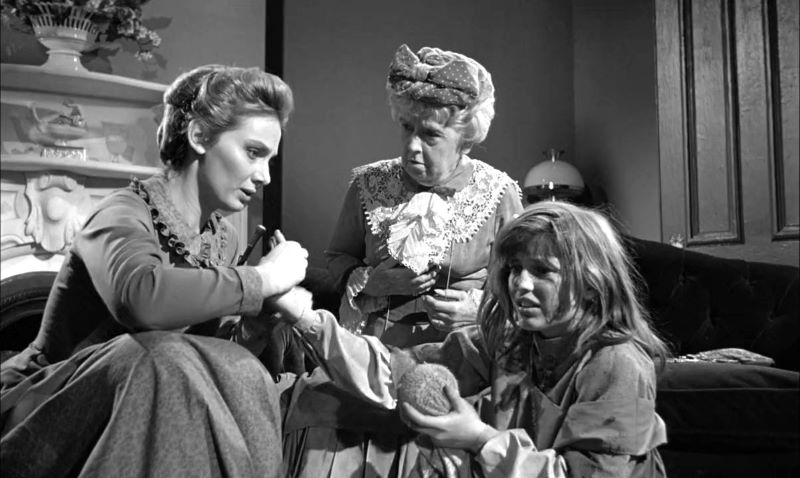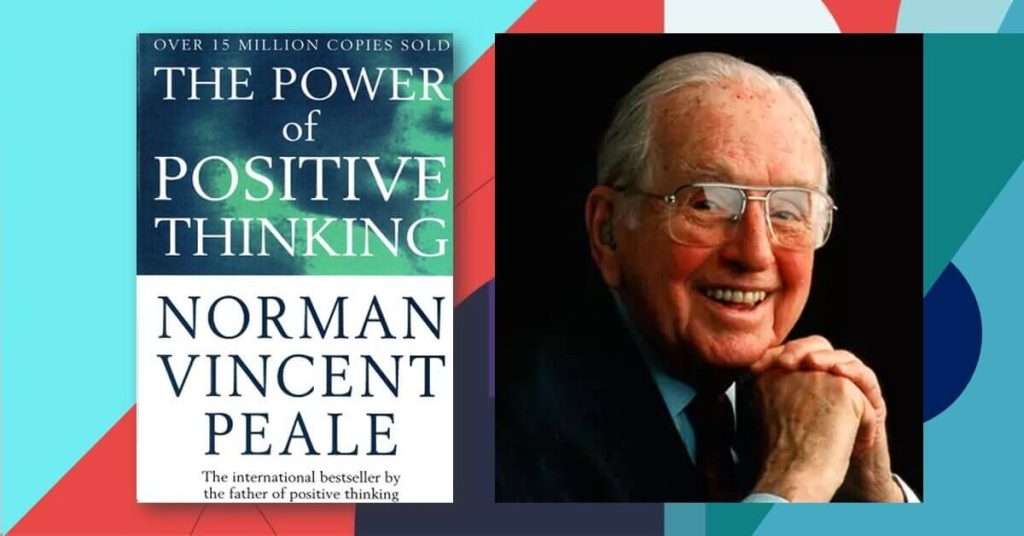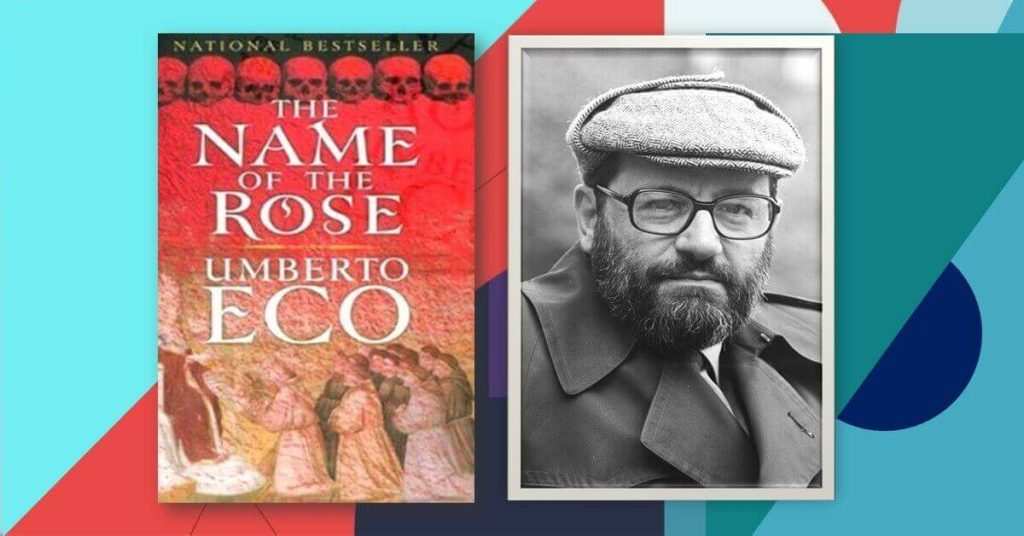Last updated on August 14th, 2024 at 12:53 pm
The Story of My Life by Helen Keller is a timeless testimony to the indomitable human spirit beside the life and struggle of physicist Stephen Hawking.
This extraordinary autobiography takes readers on a journey through the remarkable life of a woman who overcame immense challenges of life to achieve human greatness. Keller shows that no physical incapability can incapacitate any person as long one is determined to change one’s circumstances. No circumstances can stop a faithful person from overpowering it.
Because of her indomitable spirit numerous books, and articles have been written about her life to inspire people across the globe.
In her Let Us Have Faith, Keller’s message is the same: the power of belief and the importance of maintaining a positive outlook. Through her own experiences, she illustrates that faith is not merely a passive sentiment but a dynamic force that can transform our lives and the world around us. We can see the same message of hope, faith and optimism in Victor Frankl’s Man’s Search For Meaning.
Frankl writes that the people who did not have hope and could not see what is beyond their captivity in the Auschwitz concentration camp died early. The celebrated writer of The Power of Positive Thinking Vicent Peale writes, “Our inadequacy, powerlessness, inferiority originates in not knowing our own capabilities. We cannot realise what we are capable of until we stand up and inquire about the things we already have in our disposal. The author suggests us to realise our assets and our attitude towards them decide the results.”
You will never find a rainbow if you are looking down
Positive thinking quotes
Therefore how we react to our unexpected and inimical situations and circumstances matters a lot. a positive attitude brings forth favourable and good outcomes while a pessimistic manner may turn things upside down. French journalist and novelist Alphonse Karr properly said about our negative and positive outlook, “We can complain because rose bushes have thorns, or rejoice because thorn has roses.”
Rhonda Byrne writes in her The Secret, “However if you persist in thinking negative thoughts over a period of time, they will appear in your life. If you worry about having negative thoughts, you will attract more worrying about your negative thoughts, and multiply them at the same time. Decide right now that you are going to think only good thoughts. At the same time, proclaim to the Universe that all your good thoughts are powerful and that any negative thoughts are weak.”
Buddha said, “We are shaped by our thoughts; we become what we think.” Charlie Chaplin said, “You will never find a rainbow if you are looking down”, meaning that our perspective towards unfavourable situations has to be changed to experience changed results.
In The Secret Dr Vitale proposes, “If people believe they can be in the wrong place at the wrong time, and they have no control over outside circumstances, those thoughts of fear, separation, and powerlessness, if persistent, can attract them to being in the wrong place at the wrong time.”
“If people believe they can be in the wrong place at the wrong time, and they have no control over outside circumstances, those thoughts of fear, separation, and powerlessness, if persistent, can attract them to being in the wrong place at the wrong time.”
The truth is bad times or disasters befall us all sooner or later as American writer Sherrilyn Kenyon writes, “Sorrow spares no one, and scars respect no person”, but our attitude must be an optimistic and positive one in such conditions. Helen Kellar’s autobiography The Story of My Life is all about what I have mentioned above: having hope, and faith when it seems absolutely impossible.
From the darkness of her early years, Keller’s tale illuminates the boundless potential within us all, offering a beacon of hope and inspiration. Her story is not just about triumph over adversity, but a celebration of the resilience and determination that can lead us to transcend our limitations.
Helen Keller’s narrative is a powerful reminder that our circumstances do not define us; it is our response to them that shapes our destiny. Through her eloquent prose, Keller invites us to witness her transformation from a young girl trapped in silence and darkness to a renowned author, activist, and lecturer. Her profound insights and unwavering optimism resonate deeply, encouraging readers to embrace their own challenges with courage and grace.
The Story of My Life is more than an autobiography—it is a clarion call to live fully and passionately, no matter the obstacles we face.
Summary
Keller’s ability to communicate despite her handicaps has always fascinated people.
To read her autobiography The Story of My Life is to experience that communication as closely as possible. Readers gain a sense of what is like to be both deaf and blind, and of how a human being faced extraordinary difficulties with courage and grace. It is important to remember that Keller wrote The Story of My Life book while still at college when she was about 22 years old. Covering only her childhood and early adulthood, this story of Keller’s life is an incomplete one as she had over 60 years yet to live.
Background
The story of Keller’s early life takes place during the late 19th century, a time when people’s understanding of the physically disabled was much more limited than it is today.
Physically disabled people were routinely institutionalized and often assumed to be mentally disabled as well. Efforts to teach them to overcome their disabilities and lead normal lives were extremely limited. However, Keller was fortunate enough to have parents who refused to put her in an institution, an extraordinary teacher, and a burning desire to learn. Her accomplishments led to a greater public understanding of the handicapped.
Her autobiography traces her progress over the first two decades of her life, following her from her parents’ home in Tuscumbia, Alabama, through a succession of schools for the handicapped, and concluding when she is a student at Radcliffe College.
Themes
In one sense, Keller is really the only character in The Story of My Life.
The other people are secondary except as their actions affect her life. Anne Sullivan, as the person who makes it possible for Helen to communicate with other people and who serves as the primary mediator between Helen and the world, is the only other character that develops somewhat in the course of the narrative. Yet even she is seen only vaguely.
Keller interests people because she overcame great handicaps, and her fight is both the focus and theme of her autobiography.
Although loosely organized and episodic in structure, the book follows Helen’s gradual growth from a helpless blind and deaf girl to an intellectually independent woman, and it emphasizes her constant striving to lead as normal a life as possible. The first chapters deal with Helen’s life before the arrival of Sullivan and show how the absence of language skills imprisons her alert mind. Later chapters describe how she explores the world in the months after she has acquired language.
They also illustrate how capable she is of participating in all the activities of other girls her age. Keller continually focuses on her abilities, not her disabilities, so that the reader shares her discoveries with joy rather than pity.
Keller’s excitement about learning is one of her most appealing characteristics. Coming to language later and with more difficulty than most people sharpens her awareness and enjoyment of learning. Keller’s narrative reveals how Sullivan uses all their daily experiences for educational purposes, and it conveys the curiosity and joy with which Helen explores her new world.
Keller’s account of her formal education at the Cambridge School for Young Ladies and at Radcliffe College does not make light of the difficulties she faces in competing with seeing and hearing women in classes, but it also communicates her enthusiasm for her studies, particularly through her critiques of the books she reads and their impact on her.
Since Keller focuses on her abilities rather than on her deprivations, The Story of My Life serves as a model for what physically disabled people can accomplish. She stresses her normality—she enjoys the same activities that seeing and hearing people do. Her story shows readers that the physically handicapped are not “different”, a message that was particularly relevant in her era when people often assumed that those with physical disabilities also had mental frailties.
In part because of Keller’s remarkable career, that attitude has decreased considerably, and modern society is more accepting of both physically and mentally disabled people.
One of the most important parts of The Story of My Life is Keller’s breakthrough in communication, which occurred on March 3, 1887, when Anne Sullivan, her teacher, spelled the word “water” into her hand while running water over her other hand from the tubewell. This moment was life-changing for Helen, as it marked the beginning of her understanding that objects have names and that she could communicate with the world around her.
This crucial moment is described in Chapter 4 of the book. Here’s an excerpt highlighting its significance:
“We walked down the path to the well-house, attracted by the fragrance of the honeysuckle with which it was covered. Someone was drawing water and my teacher placed my hand under the spout. As the cool stream gushed over one hand she spelled into the other the word water, first slowly, then rapidly. I stood still, my whole attention fixed upon the motions of her fingers.
Suddenly I felt a misty consciousness as of something forgotten—a thrill of returning thought; and somehow the mystery of language was revealed to me. I knew then that ‘w-a-t-e-r’ meant the wonderful cool something that was flowing over my hand. That living word awakened my soul, gave it light, hope, joy, set it free! There were barriers still, it is true, but barriers that could in time be swept away.”
Literary style
The Story of My Life is autobiographical, and as such tends to be episodic and anecdotal rather than tightly plotted; indeed, an individual’s life seldom takes the form of a well-plotted novel.
This structure also partly results from the circumstances of its composition. Keller wrote many of the chapters as essay themes for the English course she took while attending Radcliffe. Consequently, there is little connection between chapters, although Keller’s progress towards leading a normal life provides a thematic framework for her story.
Modern readers may find Keller’s style old-fashioned since she describes her experiences and feelings in sentimental Victorian language. Her writing is full of literary allusions, especially biblical references. Her imagery is so vivid and extraordinarily visual that contemporary readers often refuse to believe that she had written the book. They failed to understand that language is inherently visual and that Keller’s style was formed by reading the works of seeing authors.
Furthermore, by using tactile analogies, such as heat, she could grasp visual concepts such as colour and even intensities in colour, so these elements in her writing are not unnatural.
About the author
Helen Adams Keller was born on June 27, 1880, in Tuscumbia, Alabama.
She was the daughter of Captain Arthur Keller, a former Confederate officer, and his second wife, Kate Adams Keller. She lived as a normal, healthy child for the first 18 months of her life. But, in February 1882, however, she became ill with what doctors called “acute congestion of the stomach and brain”. A conclusive diagnosis of the exact disease has never been made, but her family discovered shortly after her recovery that she had lost both her sight and her hearing.
Nevertheless, the modern medical study speculates that her loss of hearing and vision can be related to “bacterial meningitis is the likeliest culprit.”
She spent the next five years unable to communicate through speech but showed a lively intelligence in her use of signs to make her wishes known. Her parents refused to have her put in an institution, as many of their friends recommended, and instead kept her as an active member of the household.
However, by the time she was seven, the family was struggling to cope and Helen’s parents consulted eye and ear specialists in the hope of finding a cure. None of the doctors could heal the damage the illness had caused, but Dr Alexander Graham Bell, the Canadian American inventor, suggested that the Kellers contact the Perkins Institution for the Blind to see if Helen could be educated. The director of the institute, Mr Michael Anagnos, offered one of its recent graduates, Anne Sullivan, as a teacher for the child, and Helen Keller’s subsequent life and success became linked inextricably to this famous teacher.
Anne Mansfield Sullivan was born in 1866 into an impoverished Irish-American family, and after her mother’s early death, her father abandoned his three children.
Anne, already partially blinded by an eye disease that thrived in the poor living conditions of her family’s home, was sent with her younger brother, Jimmie, to the Massachusetts State Infirmary. Her brother died shortly afterwards, but Anne remained in the infirmary for four years, her eyes growing worse until she was almost completely blind.
Finally, during a government investigation of the infirmary, she pleaded with one of the commissioners to send her to a school for children with vision disability. Soon after, in October 1880, at the age of 14, she was transferred to Perkins Institution for the Blind. Anne had a difficult time at Perkins, for she had received almost no formal education up until then, and she had an unmanageable temper that almost got her expelled from the school several times.
However, she was keen to learn and made good academic progress. After two eye operations, she also recovered her sight, although it remained weak for the rest of her life. So when she arrived in Tuscumbia, on March 3, 1887, “Teacher” (as Helen Keller would later call her) had poor eyesight and only six years of formal education behind her.
In spite of her handicaps, Sullivan possessed qualities that helped her relate to Helen. She knew what it was like to be blind and unable to see. At Perkins, she had known Laura Bridgman, the only deaf-blind person who had ever been taught to communicate, and she had studied the notes of Bridgman’s teacher.
Sullivan’s infinite drive, determination, and passion for excellence also contributed to her success.
During her first month, she instilled the discipline Helen needed to enable her to learn, and on April 5, 1887, Helen finally made the connection between the words that Sullivan had been teaching her to finger spell and the objects that they named. Once she broke through this barrier to communication, Sullivan based her teaching on the principle that Helen should acquire language and knowledge like any hearing and seeing child, and she turned all of Helen’s experiences into opportunities for learning.
Helen Keller’s success was largely a result of Anne Sullivan’s unflagging teaching. Both were eager for Helen to interact and compete with seeing and hearing children. This required speech, and the greatest ambition of teacher and pupil was for Helen to learn to speak aloud properly. She began taking speech lessons when she was ten, but although she learned how to talk, her vocal cords had never been properly developed, and her speech was almost unintelligible to those who did not know her well. As an adult, her speech improved, but she needed an interpreter when speaking to strangers.
After studying for two years at Perkins, four years at the Horace Mann School for the Deaf, and two more years at the Wright Humason School for the Deaf, at 16 Keller entered the Cambridge School for Young Ladies, a school that prepared pupils for higher education. Here and at Radcliffe College, which Keller entered four years later, Sullivan kept up the phenomenal effort of spelling all the lectures and much of the required reading into her student’s hand. It was while she was attending Radcliffe that Keller wrote The Story of My Life.
She graduated with honours in 1904.
For several years after her graduation, Keller tried to support herself and Sullivan through her writing. Unfortunately, the public most wanted to hear Keller talk about herself, a subject that she felt she had exhausted.
Instead, she wrote essays expressing Socialist views, and opinions on issues that many people felt were not proper for her to discuss, such as the need for doctors to put nitrate of silver in the eyes of newborns to prevent the blindness that venereal disease often caused. Some people even accused Sullivan and her husband, John Macy, of being the originators of Keller’s ideas. Unable to earn enough money by writing, Keller turned to lecturing in 1913 and continued on the lecture circuit for three years.
Still plagued by a lack of money, Keller began working in vaudeville, presenting a short act with Teacher on how she had been taught and advocating the right of the handicapped to a normal life. This drew a storm of criticism that she was exhibiting her handicap for profit, but Keller was finally earning enough to support herself and Sullivan. She worked on and off in vaudeville for several years until she finally found her real vocation in 1923 as a spokesperson for the American Foundation for the Blind.
For the rest of her life, Keller campaigned for the foundation, crisscrossing the country and eventually the world, making speeches and visiting the blind.
Her efforts on behalf of blind, deaf, mute, and handicapped people heavily influenced reforms to improve social and educational opportunities for the physically disabled. Sullivan’s death on October 20, 1936, was a great blow to Keller, but she continued her speechmaking, with Polly Thomson, the indispensable secretary and friend who had lived with Keller and Sullivan since 1914, acting as interpreter. Keller wrote two more books,
Helen Keller’s Journal (1938), a diary she had kept for the first six months following Teacher’s death, and Teacher: Anne Sullivan Macy (1955). She actually had to write the latter book twice, for the first manuscript was burned, along with all her letters from Anne and her notes, in a fire that destroyed her home in 1946.
Helen Keller died on June 1, 1968, widely acknowledged as one of the 20th-century’s leading humanitarians. She is buried beside Anne Sullivan and Polly Thomson in the National Cathedral in Washington, D.C.
Media adaptions
Although several biographies had been written about Keller since her emergence into the public eye, it was not until 1953 that anyone attempted serious adaptations to other media. After reading The Story of My Life, William Gibson wrote a ballet with vocal accompaniment based on the book. Although the ballet was never produced, the director Arthur Penn commissioned Gibson to use the subject matter for a television drama.
Gibson then revised the material into a Broadway play, which opened in October 1959 as The Miracle Worker. Anne Bancroft played Anne; Patty Duke played Helen. When the play was adapted for the cinema in 1962, Bancroft and Duke again played the leads, winning enormous critical acclaim, as well as Oscars for their emotionally charged portrayals of teacher and student.
While the book traces Keller’s life through her years at college, The Miracle Worker focuses only on the first month of her life after Sullivan becomes her teacher. Keller is portrayed as a spoiled child who dominates her weak father and indulgent mother.
Storyline:
The film starts with the Keller family realizing that their infant daughter, Helen, has lost her sight and hearing after a chronic illness. By the time Helen is six years old she becomes wild, and unruly due to incapable to communicate with the world around her. Her parents, Captain Arthur Keller and Kate Keller, are desperate for a solution.
They hire Anne Sullivan, a young and determined teacher from the Perkins Institute for the Blind, to work with Helen. Anne arrives at the Keller household and quickly realizes the magnitude of the challenge before her. She faces resistance not only from Helen but also from her parents, who have indulged Helen’s every whim out of pity.
Anne insists on discipline and edification and ends up clashing with Captain Keller’s more compassionate approach. She decides to isolate Helen from her family briefly, taking her to the garden house to lessen distractions and interruptions. This isolation period becomes a turning point as Anne begins to break through Helen’s barriers.
The most critical scene in the film occurs when Anne takes Helen to the water pump to teach to spell with finger spell. Anne repeatedly spells “W-A-T-E-R” into Helen’s hand while pumping water over her other hand. Suddenly, Helen makes the connection between the spelled letters and the sensation of water. This breakthrough opens the floodgates of communication, and Helen eagerly learns the names of various objects around her.

The film concludes with Helen’s triumphant progress in learning to communicate and the deep bond formed between her and Anne. It highlights the transformative power of education, perseverance, and the unwavering dedication of a teacher who believed in her student’s potential against all odds.
Sullivan, who is tough yet empathetic, believes that Helen must be tamed before she can be taught, and the two push each other to their limits. Finally, after Helen deliberately spills a jug of water at the dinner table and Anne drags her outside to the water pump to refill it, Helen makes the connection between water and the letters “w-a-t-e-r” that Anne spells out in her hand. This breakthrough marks the beginning of Keller’s new life.
Conclusion
To conclude I must say that the story of Helen Keller is the story million people who seem to find no meaning in their lives because they think they are in the wrong place at the wrong time due to unfulfilled expectations.
Not many of us have been born with fortune or even if we have misfortune will follow someday. Either born with misfortune or time has brought it, we must find the meaning of our lives in the difficulties and make our as well as other’s lives meaningful, and purposeful with our creation and informativity.






